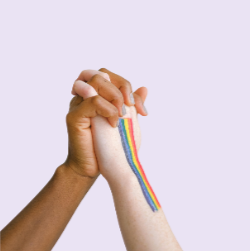
Safety Facts
According to the UN, an estimated 736 million women worldwide have suffered physical and/or sexual violence at least once from an intimate partner, and/or sexual violence from another person (30 percent of women over the age of 15).1
In 2022 in Canada, 184 women and girls were violently killed. A woman or girl is killed every 48 hours, according to the Canadian Women's Foundation.2
In most cases, the options available to women who have been assaulted are limited, and the response times of the competent authorities are not always accessible, depending on the circumstances surrounding the victim (rural area, time of assault, etc.). As a result, less than 40% of women who suffer violence seek some form of help, for lack of an immediate and practical solution.1
Only 310/1000 sexual assaults are reported to police. Out of these, only 50 will lead to an arrest, 28 to a felony conviction, and 25 to incarceration, meaning 975 perpetrators walk free.3
In addition to the profound social damage caused by gendered aggression, violence against women can entail significant costs both for the state, but also for victims/survivors and communities. The costs are both direct and indirect, tangible and intangible. For example, the cost of salaries for people working in shelters are direct tangible costs. Costs are borne by everyone, including individual victims/survivors, perpetrators, government and society in general.
Sexual Violence On Campus
1/5 women are sexually assaulted while in college. Campus sexual assault accounts for 43% of on-campus crime. 90% of these instances go unreported. Victims’ mental health, physical health, and academic performance are negatively affected.1
In 2014, 40% of colleges and universities in the U.S. admitted to not investigating a single sexual assault in the previous 5 years, 30% did not offer training on sexual assault, 70% had no protocol for working with law enforcement.2
In Canada, 71% of postsecondary students witnessed or experienced unwanted sexual behaviours either on campus or out with other students, less than 10% of victims chose to speak about what happened with someone associated with the school, 91% of witnesses to these behaviours chose not to seek help or take action.3
The red zone for college students is the period from August to November at the beginning of a school year. More than 50% of college sexual assaults occur during these months.4
Sexual Violence In the LGBTQ+ Community
3/5 gay men and women have experiences contact sexual violence. 56% of bisexual men have experienced contact sexual violence. 4 in 5 bisexual women have experienced contact sexual violence.1
47% of transgender people have been sexually assaulted. 57% say they feel uncomfortable going to the police for help.2
70% of those who identify as LGBTQ+ have experienced sexual harassment at work. 66% were afraid to tell their employer because they were worried about being outed.3
70% of affected LGBTQ+ individuals who reached out for help from mental health counsellors and/or physicians experienced prejudice.4
Gender Based Violence
In Canada, 1 in 3 women have experienced violence and 1 in 10 are currently experiencing violence. Violence against women is the most common cause of injury and the annual cost for treating survivors ranges from $408 million to $1.5 billon.1
The economic cost of gender based violence is $7.3 billion in Canada and $273.4 billion in the U.S.2
Survivors of gender based violence may face various physical and mental health ailments, such as asthma, chronic pain, PTSD, and addiction. It also interferes with work: total lifetime income loss for survivors is estimated to be $250,000 each.3
1125 women and girls were killed in gender-related homicides between the years 2011 and 2021 in Canada. 93% of the perpetrators were male intimate partners or family members of the victim.4








